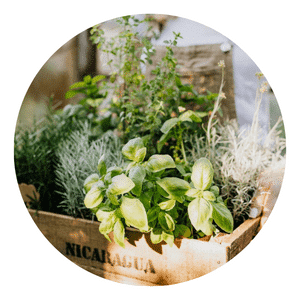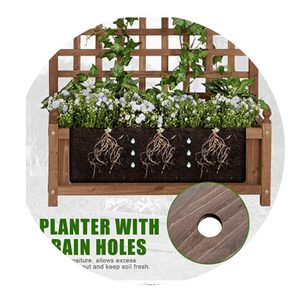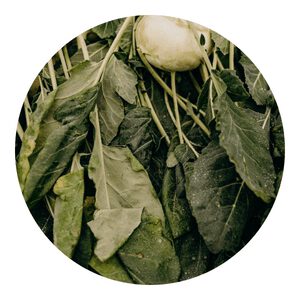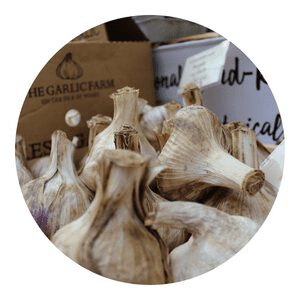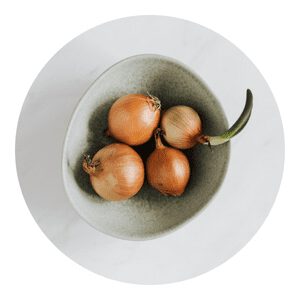How to grow organic Radish
Chappy, the beloved gardener, is back with another fantastic guide – this time on how to grow organic radish!
This guide is perfect for those who want to start growing their own food but don’t know where to start.
Chappy walks you through everything you need to know, from what type of radish to grow to how to care for it.
With step-by-step instructions and beautiful photos, this guide is a must-have for anyone interested in growing their own organic radish.
So what are you waiting for?
Radish Menu
If you’re looking to increase your vegetable garden’s production of radishes, there are a few things you can do.
How to plant organic radishes
There are many benefits to growing organic radishes. They are easy to grow, and you can get a quick harvest from them.
In this article, we will discuss the necessary steps for planting organic radishes.
The first step is to choose the right location for your radish plants. They need full sun exposure, so make sure you plant them in an area that gets plenty of sunlight.
The soil should also be rich in nutrients and well-drained.
Once you have selected the right spot, it’s time to prepare the soil. Add some organic matter to the soil, such as compost or manure, and mix it in well.
Then use a garden rake to level out the surface of the soil.
Now it’s time to plant the seeds.
How to care for and harvest organic radishes
Organic radishes are a cool season crop that can be harvested from early spring to late fall.
They are easy to grow and care for, and can be enjoyed in a variety of dishes.
Here are a few tips on how to care for and harvest your organic radishes.
What to do with surplus organic radishes
One way to deal with the surplus of organic radishes is to give them away to people who might enjoy them.
Another option is to cook the radishes, which can be done in a variety of ways. Some people might choose to pickle the radishes, while others may prefer to eat them raw.
Radish Varieties
There are so many different types of radishes to choose from, you could grow a different type every week and have a new crop all summer!
While the classic red globe radish is always a good option, why not try something different this year?
Here are few types of radishes you should grow in your garden:
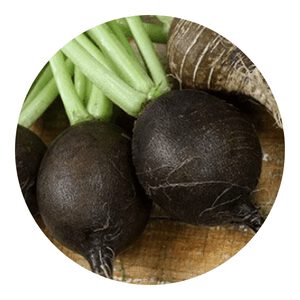
Black Spanish

Daikon
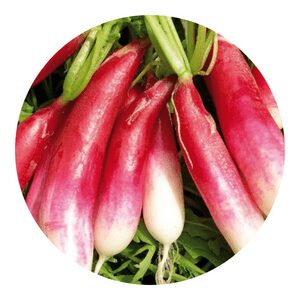
French Breakfast
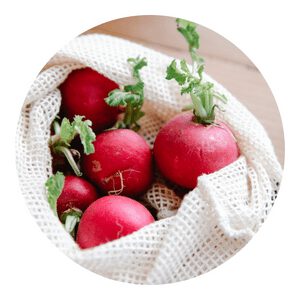
Red Radish

Watermelon
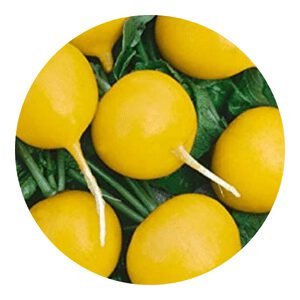
Yellow Globe
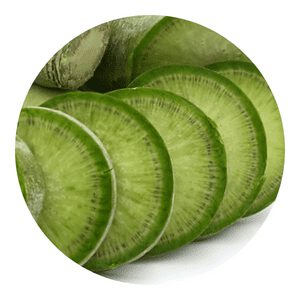
Green Meat
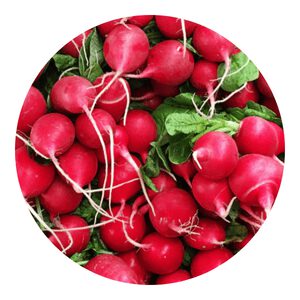
Cherry Belle

Patricia

Easter Egg

White Hailstone
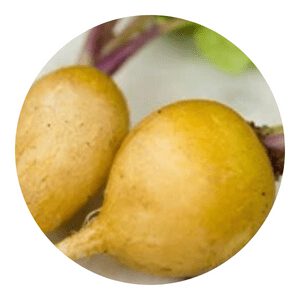
Helios
To grow organic radish, you need to sow the seeds in soil that's rich and fertile. Make sure to keep the soil moist and the plants will be ready to harvest in about four weeks.
Chappy The Gardener
Tips for growing organic radishes
Radishes are a cool weather crop that can be planted in early spring or late summer. They are adaptable to a variety of soil types and grow best in full sun.
Radishes come in many different colors, shapes, and sizes.
The most common type is the red radish, but there are also white, black, and pink varieties.
Here are some tips for growing organic radishes:
1. Choose a sunny location with well-drained soil.
2. Amend the soil with compost or manure prior to planting.
3. Sow the seeds 1/2 inch deep and 1 inch apart.
4. Water regularly and thin the plants to 2-3 inches apart once they have reached maturity.
5. Harvest the radishes when they are 1-2 inches in diameter.
What pests might attack organic radishes?
Organic radishes are grown without the use of pesticides or herbicides, so they can be susceptible to pests that might not bother conventionally grown radishes.
Some pests that might attack organic radishes include aphids, cabbage loopers, caterpillars, flea beetles, and root maggots.
How to prevent or get rid of pests attacking organic radishes
What's the best organic fertilizer for radishes?
Radishes are a cool season crop that grow best in soils with a pH level of 6.0 to 7.5. They are a fast maturing crop, and can be harvested as early as 28 days after planting.
Radishes prefer light, sandy loam soil that is well drained. Adding organic matter to the soil before planting will help improve drainage and moisture retention.
There are many different types of organic fertilizers available, so it can be difficult to decide which one is best for radishes.
Organic fertilizers are made from natural materials, such as animal manure, plant compost, or green manures.
They are slow release fertilizers that provide nutrients over a period of time, which is why they are often called “slow release.” Organic fertilizers also improve the structure of the soil by adding organic matter.
Kelp Meal
Kelp meal organic fertilizer is made from the dried and powdered kelp seaweed. It is an excellent source of nutrients for radish plants, including nitrogen, potash, and phosphorus.
Kelp meal also contains trace minerals that are beneficial for plant growth. It is a slow-release fertilizer that can be applied before planting or at any time during the growing season.
Bone Meal
Radishes are one of the easiest vegetables to grow, and they are a great addition to any garden. One way to ensure a healthy crop of radishes is to use bone meal as an organic fertilizer.
Bone meal is rich in phosphorus and calcium, two essential nutrients for radish growth. When applied to the soil, bone meal will help radishes develop strong roots and produce plenty of foliage.
To use bone meal as an organic fertilizer, simply mix it into the soil before planting.
For best results, apply bone meal when the soil is moist so it can be easily absorbed by the roots.
Radishes typically take about 30 days to mature, so you should see results soon after applying bone meal to the soil.
Compost
Organic fertilizer is essential for growing radishes.
Radishes are a root vegetable and need to be able to access nutrients deep in the soil. Compost is a great way to provide these nutrients.
To make compost, you can either buy it or make it yourself. If you choose to make it yourself, you’ll need to start with organic matter such as leaves, grass clippings, and kitchen scraps. You’ll also need a bin or container in which to store the compost while it breaks down.
Once you have your materials, mix them together and add water until the mixture is damp but not wet.
Stir the compost regularly, and in a few weeks, it will be ready to use. Simply spread it around the base of your radish plants.
Manure
Organic fertilizer, such as manure, can be an effective way to fertilize radishes. Manure provides nutrients that help the plants grow and produce a bountiful crop.
Applying manure to the soil around radishes also helps to loosen compacted soils, making it easier for the roots to penetrate and absorb nutrients.
When using manure as an organic fertilizer, it is important to choose a type that is low in nitrogen. Nitrogen-rich manures can cause the leaves of radishes to become excessively green, preventing the development of the root system.
A good rule of thumb is to select a manure that has been aged or composted for at least six months. This will help to reduce its nitrogen content and make it more suitable for use as an organic fertilizer.
Types of Organic Fertilizers
Organic fertilizers come from natural, renewable resources and are effective in supplying plants with the nutrients they need to grow.
In addition to supplying necessary nutrients, organic fertilizers also help improve soil tilth and structure, and increase water retention.
Organic fertilizers can be used as a stand-alone fertilizer or in conjunction with synthetic fertilizers. There are many different types of organic fertilizers available on the market, each with its own unique set of benefits.
Some of the most common types of organic fertilizers include: compost, manure, blood meal, bone meal, kelp meal, and cottonseed meal.
What helps radishes grow faster?
According to the National Gardening Association, radishes are a cool weather crop that can be planted in early spring or late summer.
There are many different ways to plant and grow radishes, but one of the most common questions is how to make them grow faster.
There are a few things that gardeners can do to help their radishes grow faster.
One of the most important things is to make sure that the soil is fertile and has enough nutrients.
Radishes also need plenty of water, so gardeners should make sure to water them regularly.
Additionally, gardeners can use organic matter such as compost or manure to help improve the quality of the soil.
Finally, it’s important to thin out the radish plants when they are young so that they have enough space to grow.
How often do you water radishes?
Watering radishes is important to their growth and development. The amount of water that a radish needs depends on the soil type, weather conditions, and the size and age of the radish.
In general, young radishes need more water than older ones.
Radishes grown in sandy soils need more water than those grown in clay soils. Hot weather requires more frequent watering than cool weather.
What is the best month to grow radish?
Radishes are a cool weather crop that can be planted in late winter or early spring.
They are one of the first vegetables to mature, and can be harvested in as little as 25 days.
There are many different types of radishes, from small red radishes to giant white daikons.
Radishes grow best in temperatures between 60 and 80 degrees F, and do not tolerate frost well.
How long will it take to grow radishes?
Radishes are a fast-growing crop that can be harvested as early as three weeks after planting.
The length of time it takes to grow radishes depends on the variety, soil temperature, and moisture levels.
Most radish varieties will take between 21 and 28 days to reach maturity.
Do radishes come back every year?
Radishes are a cool weather crop that can be planted in early spring or late summer/early fall.
They grow best in temperatures between 55 and 75 degrees F.
Radishes are a fast growing crop and can be harvested within 25-30 days after planting. Radishes do not come back every year, but can be grown again from seed.
How to Grow Radish in a Greenhouse
Growing radish in a greenhouse is a great way to get a jump on the growing season.
Radishes are a cool weather crop and do well in temperatures that range from 50 to 70 degrees Fahrenheit.
They can be planted in late winter or early spring and will be ready to harvest in about four weeks.
To grow radish in a greenhouse, start by selecting a location that has plenty of sunlight. The greenhouse should also have good air circulation so the plants can dry off quickly after being watered.
Fertilize the soil before planting and then water the plants regularly.
Radish can be harvested when they are 3 to 4 inches long.
How to Care for Radish in a Greenhouse
Most people know radishes as a quick-growing, red root vegetable. What you may not know is that radishes can also be grown in a greenhouse.
In this article, we will discuss how to care for radish plants in a greenhouse and some tips for harvesting them.
In conclusion, growing organic radish is a great way to garden and can be a fun addition to any meal.
By following the guide above, you should be able to produce a healthy crop of radishes.
If you have any questions, feel free to ask them in the comments below.
Thanks for reading!
Click To Grow
Helps Us Grow – Share If You Like





